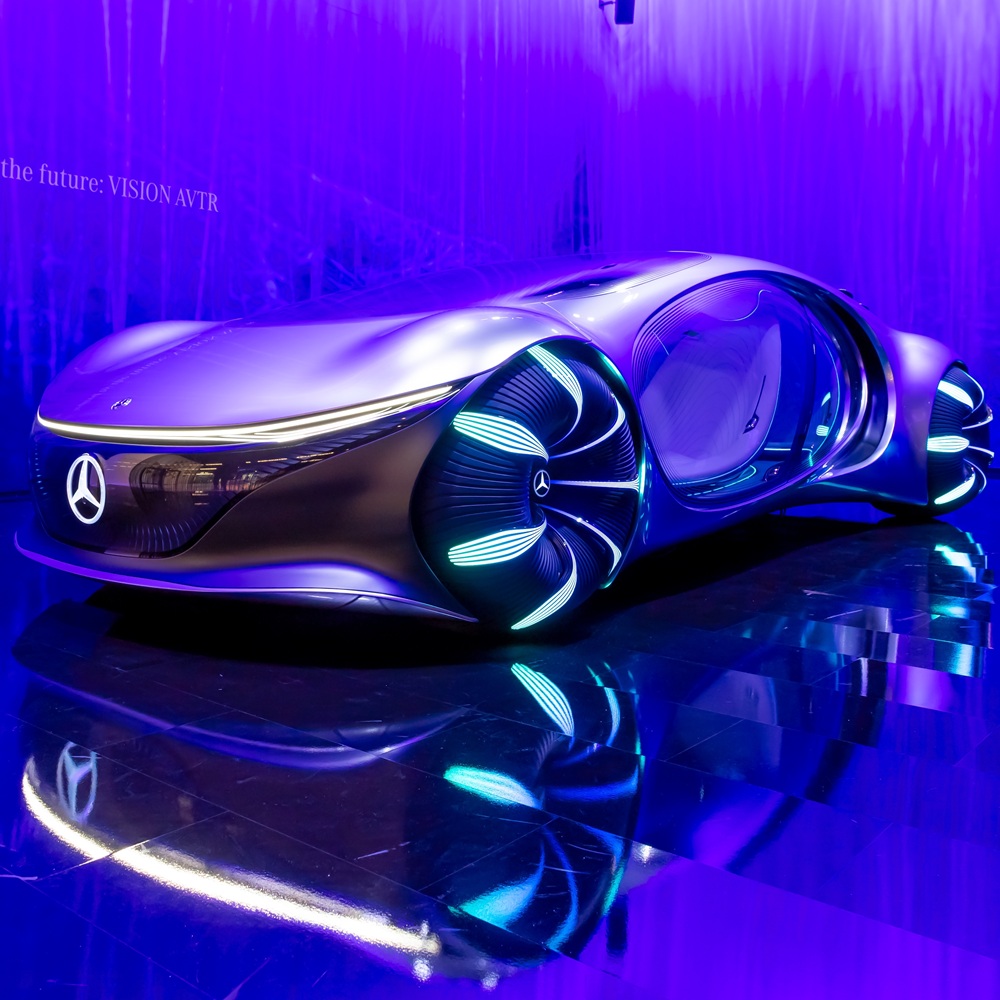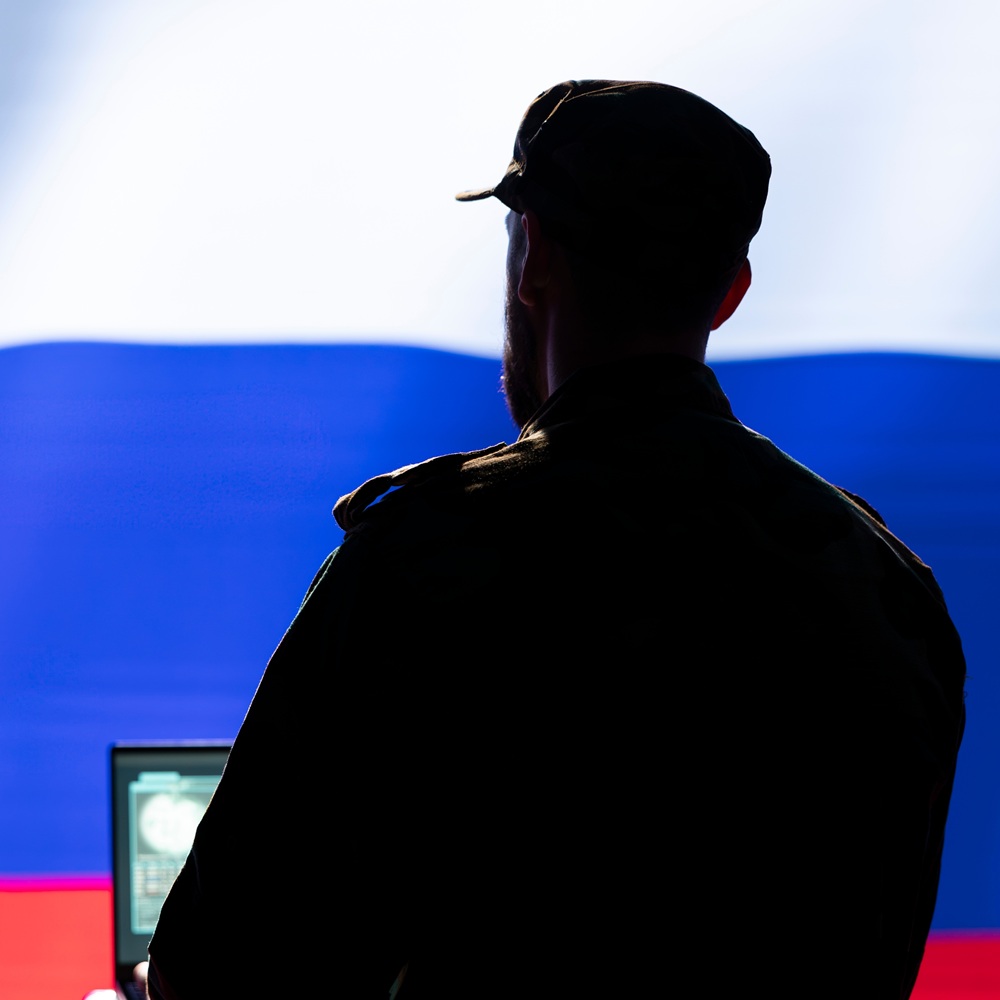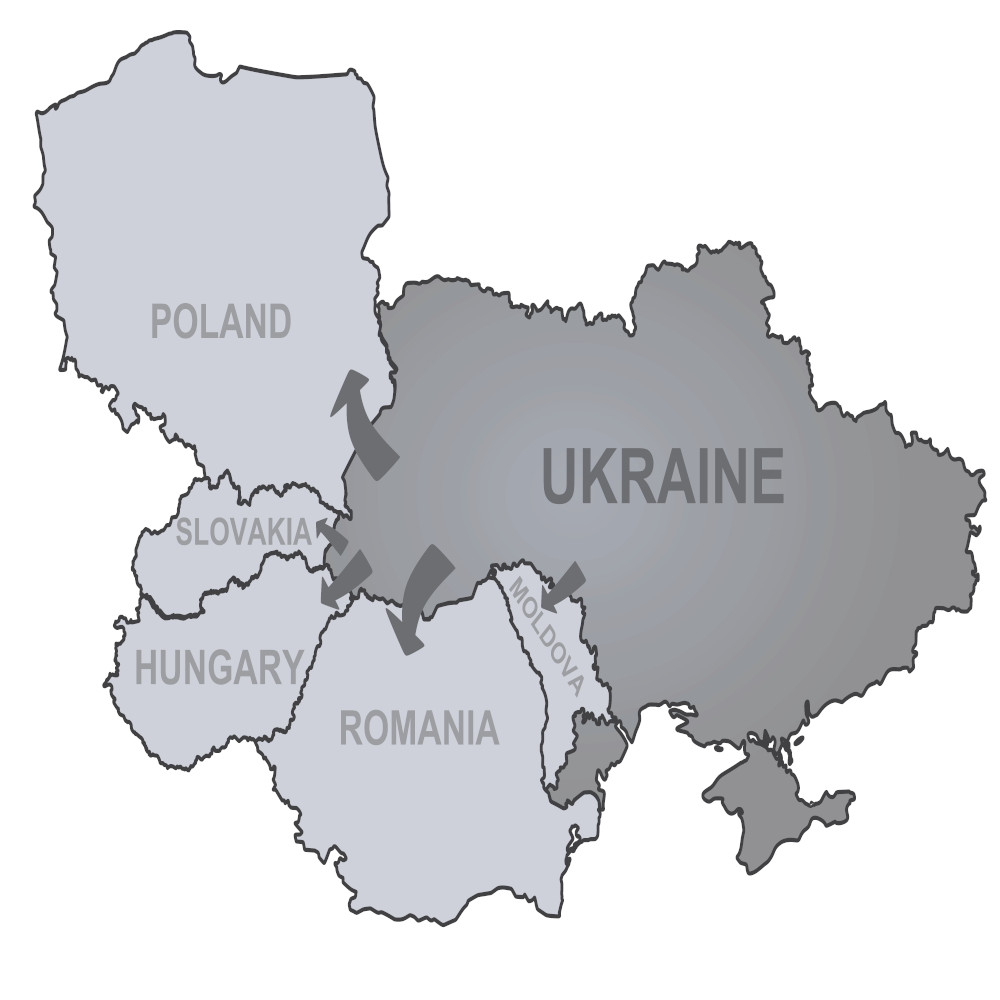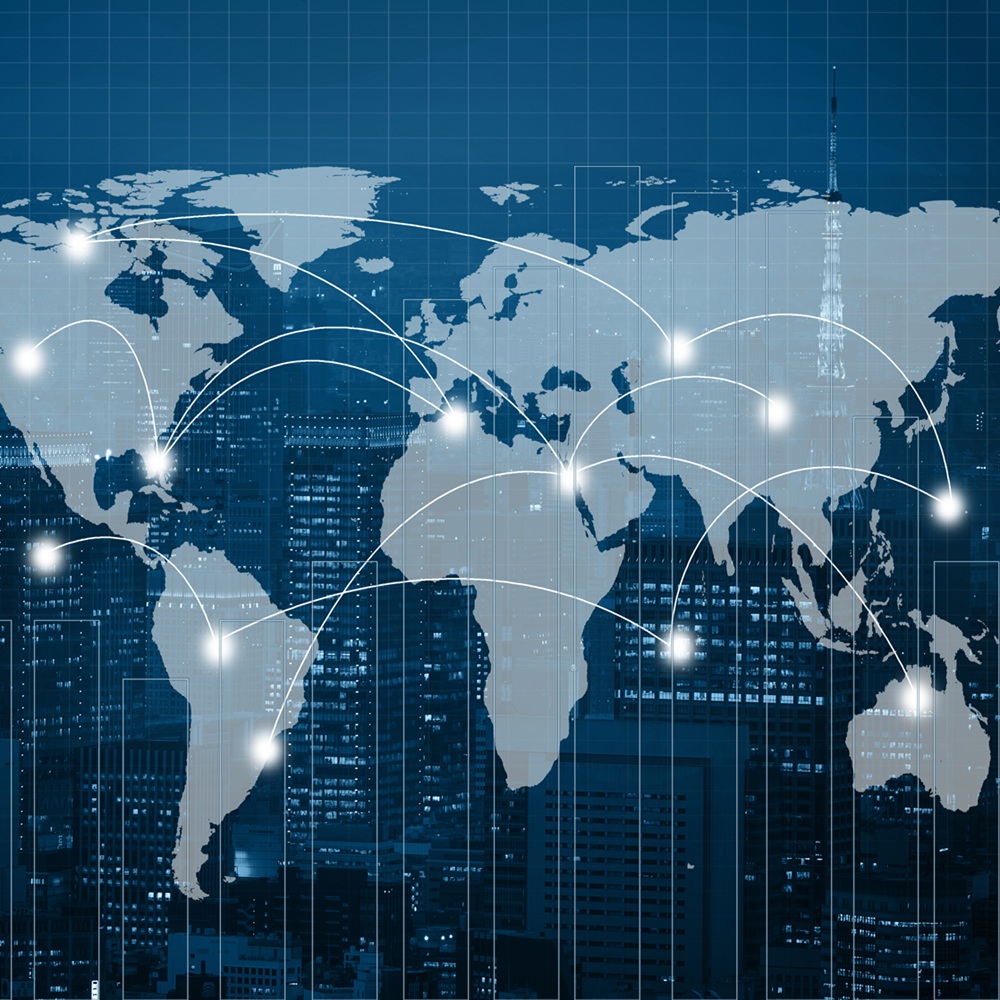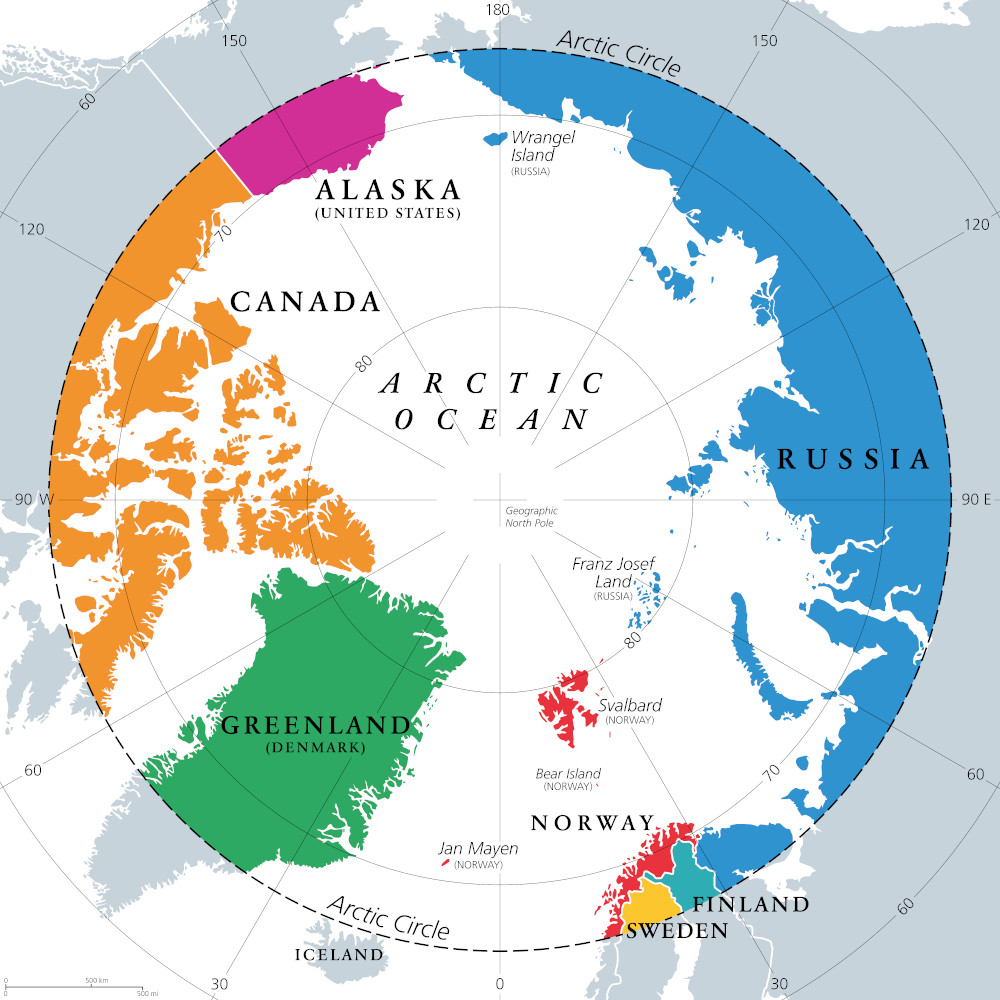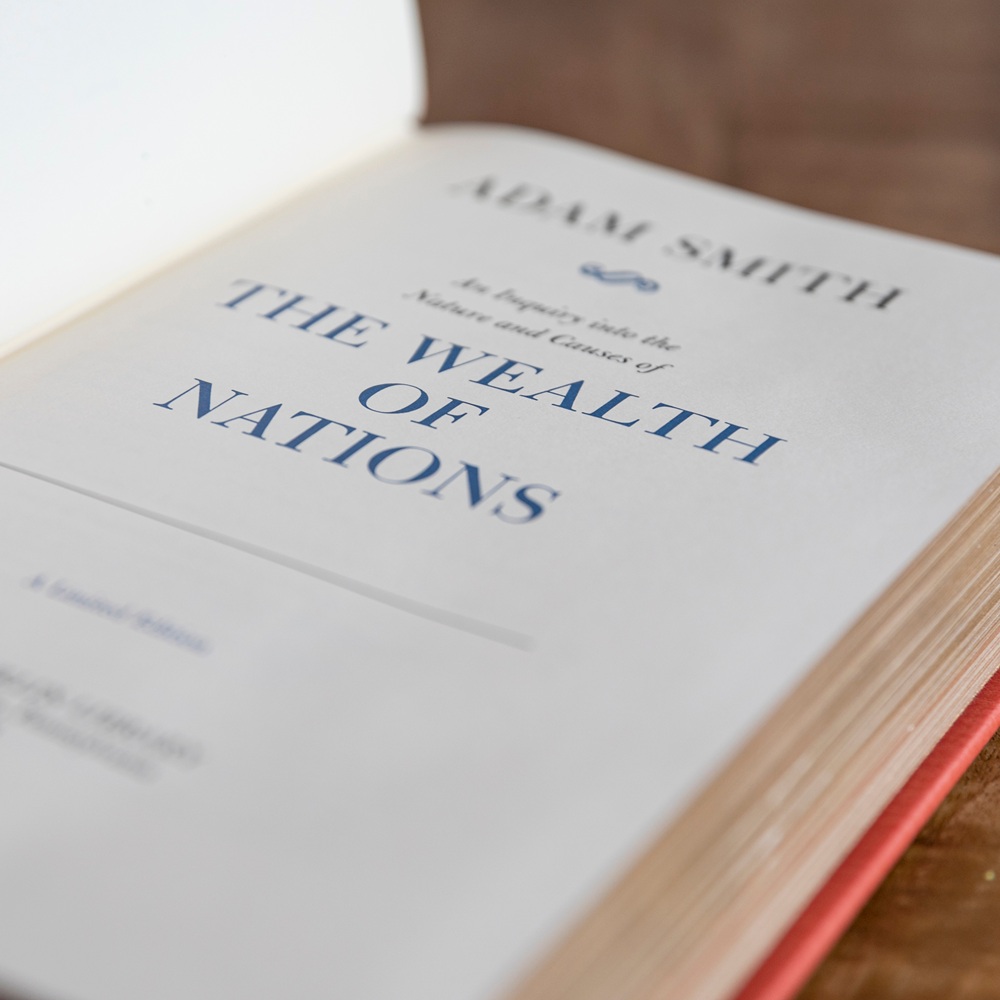
Seven emerging technologies shaping the future of sustainability and innovation
by World & New World Journal
Introduction Technological innovation is accelerating at an unprecedented pace, reshaping how societies generate energy, transport people and goods, produce food, fight disease, and explore space. Across multiple sectors, groundbreaking solutions are emerging in response to global challenges such as climate change, public health threats, energy insecurity, and resource scarcity. This article examines seven transformative technologies — from wireless electric-vehicle charging roads and regenerative ocean farming to graphene applications and disease-eliminating robots — each demonstrating how science and engineering are redefining sustainability, resilience, and human capability in the 21st century. 1. Wireless Electric Vehicles Charging Roads Electric Vehicles (EVs) have become key technology to decarbonise road transport, a sector that accounts for over 15% of global energy-related emissions. The increase of their sales globally exceeded 17 million in 2024, and it is forecasted to surpass the 20 million units by 2025. (IEA, 2025) Source: IEA analysis based on country submissions and data from the European Automobile Manufacturers Association (ACEA), European Alternative Fuels Observatory (EAFO), EV Volumes and Marklines. Despite this growth, several concerns continue to slow down their widespread adoption. Limited charging infrastructure, battery-related autonomy issues, high purchase costs, slow charging times, and the environmental impact of the battery productions remain major obstacle. The broader EV industry, however, is actively developing new technologies to overcome these challenges. (Automotive Technology, 2025) In this context, one of the most pressing challenges is energy supply – specifically, the need for better batteries and more accessible charging points. To address this bottleneck, a promising new trend has emerged: wireless roads capable of charging EVs while they drive. This technology could fundamentally transform the charging experience and significantly reduce dependence on stationary chargers. The idea is simple, a system that supplies power to EVs while driving, using embedded inductive coils (wireless charging) or conductive rails on the road, in other words a dynamic or in-motion charging on the road. In fact, this technology already exists and there are several examples worth mentioning: - South Korea: introduced in 2013, the first road-powered electric vehicle network, in which electrical cables were buried below the surface and wirelessly transfer energy to the electric vehicles via magnetic resonance. An electrified road has the advantage of eliminating the plug-in infrastructure and vehicles usually require a smaller battery, reducing weight and energy consumption. In 2009, KAIST introduced the OLEV (online electric vehicle), a type of EV that uses wireless dynamic charging through inductive coils embedded in the road. The OLEV public transport buses were later used in the 2013 first electric road in the city of Gumi, which consisted of a network of 24 km, by 2015 the number of OLEV buses increased to 12 (Anthony, 2013) and another bus line was launched in Sejong that same year. (SKinno News, 2021)- Sweden: a 1.6 km road linking Stockholm Arlanda airport to a logistic site outside the capital city was a pilot project achieved in 2016. (The Guardian, 2018), (Carbonaro, 2022) However, the Swedish government didn’t stop there and by 2020 they built a wireless road for heavy trucks and buses in the island city of Visby, and they are planning to expand it to the 13-mile E20 highway – logistic hub between Hallsberg and Örebro – and even have a plan of further 3,000 km of electric roads in Sweden by 2035. (Min, 2023), (Dow, 203)- USA: a quarter mile (400 m) section of road through the Corktown area of Detroit was changed to a wireless electric road. Electreon was the company in charge of the project. (Paris, 2024), (6abc Philadelphia, 2025)- France, Norway and China: Electreon – a leading provider of wireless charging solutions for EVs – has partnered and gained projects for wireless highways in France – a section of the A10 highway (Electric Vehicle Charging & Infrastructure, 2023) –, Norway – evaluation of wireless charging for AtB’s BRT routes in Trøndelag (Foster, Electreon to install the first wireless electric road in Norway, 2023) – and China – not wireless but in an 1.8 km electrified highway in Zhuzhou. (Foster, China demonstrates electrified highway, 2023) While all these examples show a “tendency” to switch into wireless roads, it is important to highlight three points to keep that are decisive and have slowed down the transition: in first place, these wireless roads are being targeted mainly for freight trucks and buses, the second point is the initial cost of the infrastructure is high and third point is the technology that should be added to the EVs. 2. Fire Suppression Using Sound Waves Seth Robertson and Viet Tran, engineering students from George Mason University in Virginia designed a fire extinguisher that uses sound waves to put out flames. Their device emits low-frequency sound waves that disrupt the conditions necessary for a fire to sustain itself, meaning that no foam, powder, chemicals or water are needed to extinguish a fire, just sound. In order to understand how it can be possible to extinguish fire with sound it is necessary to remember that a fire needs heat, fuel and oxygen to survive, if one of these elements does not appears, there is no fire, under this principle, Robertson and Tran’s prototype uses sounds to separate the oxygen from the flame, as a result, the fire extinguish. The interesting part is that the sound must have the right frequency, specifically between 30 to 60 Hz – low frequency sounds. The sound waves will act as pressure waves moving the air molecules back and forth, and in the right frequency, the movement will disrupt the flames’ structure, separating the oxygen molecules and the fire will simply die out with the lack of these molecules. Potential applications include small kitchen fires or small fires, while unfortunately, large-scale structural or wildland fires still remain a challenge, mostly due to the environmental factors, like wind, air density and flame intensity, that can be a hurdle in uncontrolled environments. Moreover, the generation of low-frequency sound waves powerful enough to suppress fires requires a significant amount of energy. Nonetheless, an early prototype consists of an amplifier to generate low-frequency sound and a collimator to focus the sound waves directly on the fire, and as mentioned before, one limitation is that specialized equipment is required to produce the high-pressure sound waves. Still, research has been carried out recently and it is expected that this technology could be a non-destructive and less damaging method for firefighters soon. https://www.youtube.com/watch?v=uPVQMZ4ikvM 3. Regenerative Ocean Farming Regenerative ocean farming is a climate-friendly model of aquaculture where seaweed and/or shellfish are grown in a way that requires no freshwater, feed or fertilizer, as the crops naturally filter nutrients from the water and capture carbon and nitrogen. This farming model can benefit coastal ecosystems and communities by increasing food security, creating jobs, improving water quality, protecting coastlines, supporting ocean justice (Urban Ocean Lab, 2023) and most importantly, mitigating climate change. Ocean farming can rely on a polyculture system – cultivate a mix of shellfish and seaweeds – or just a single species system. While the climate conditions determine the species to grow, it does not affect the system itself. The system follows a vertical layer farming way, in which farms use ropes that extend vertically from the surface to the seabed, in addition to the use of different levels and cages for scallops, oysters or clams, for example, as shown in Figure 2. Other species like kelp, abalone, purple sea urchins or sea cucumbers can also be harvested. Figure 2: Ocean farming diagram. Source: Urban Ocean Lab The big advantage is the maximization of the ocean space, producing more food in a smaller footprint, in addition to the use of the benefits of the species – seaweed and shellfishes – which are both natural filters that help to clean the water and absorb excess nutrients, combating ocean acidification and reducing marine pollution (Hassan, 2024) naturally. Moreover, the versatility of these species allows them to use them in other areas, such as biofuels, soil fertilizers, animal feed or cosmetics and not only for human food. Around the world, there are several projects that have adopted this methodology (Hassan, 2024): 1. GreenWave (USA): increased biodiversity by 50%, reduced nitrogen level in water by 20% and created sustainable job opportunities for locals.2. Ocean’s Halo (Ireland): annual harvest of 500 tons of kelp, creation of 20 jobs in rural areas and carbon footprint reduction by 30%3. Kitasaku Marine (Japan): Nori production increased by 25%, coastal water quality improved by 15% and local support of 50 locals.4. Catalina Sea Ranch (USA): harvested 1 million pounds of mussels annually, increased local biodiversity by 20% and created 10 new jobs.5. Blue Ventures (Madagascar): harvested 146 tonnes of red seaweed, plus they have created a sea cucumber market with a value of $18,000 and 700 farmers have been trained to farm in the ocean. (Blue Ventures Conservation, 2015)6. Havhøst (Ocean Harvest) (Denmark): they are growing seaweed, mussels and the European flat oyster in 30 communities along the Danish coast. In addition, they focus on educational activities to introduce ocean farming to more people. (Waycott, 2022) Overall ocean farming creates a positive environmental impact; it provides a sustainable food source and economic opportunities for the local people and the industry. Of course it faces challenges, but it has become a way to mitigate climate change and protect the ocean. 4. Wave Energy Generators There are two types of waves. Surface waves are generated by a combination of wind passing over the sea’s surface raising up water and gravity pulling it back down. In a technical way, warm air rises and expands, creating areas of low pressure compared to places with cooler air. Air then moves from high-pressure areas to low-pressure areas. This movement of air is wind and when it rushes across the surface of the Earth it creates waves in oceans. (Lumley, 2025) On the other hand, underwater waves are sound waves produced by earthquakes or volcanic eruptions; these waves travel by compressing and expanding the water. (Kadri, 2025) In both cases temperature variations and other factors can affect the nature of the waves. For instance, wave energy or wave power harnesses the ocean’s waves to generate energy by converting a wave’s kinetic energy into electricity. Wave power is a form of renewable and sustainable energy which has potential cost benefits over solar and wind but faces technological challenges limiting its large-scale adoption in electricity generation and water desalination. (Lumley, 2025) The nature of the waves makes wave energy the world’s largest source of energy with a potential of annual global production of 29,500 TWh, according to the Intergovernmental Panel on Climate Change (IPCC, 2012). In addition, it works well in tandem with other renewables such as wind. (Ocean Energy Europe, s.f.) In terms of technology itself, wave energy has relied on the next devices: 1. Point absorbers: floating buoys that capture the vertical movement of waves, which then is harnessed through a cable anchored to the seabed. The vertical movement of the waves is subsequently transformed into electricity via converters (alternators, generators or hydraulic systems). These are usually mounted on the seabed in shallower water and are connected to the floating buoys.2. Oscillating water columns (OWCs): a partially submerged, hollow structure connected to an air turbine through a chamber. These devices use the rise and fall of the waves to compress air, the air is forced to move back and forth in the chamber and creates a strong air flow that powers the turbine, generating electricity.3. Overtopping devices: a floating structure made of segments linked together, which lifts up and down with the waves. These devices harness wave energy by allowing waves to flow into a reservoir, which then releases the water through turbines to generate electricity. Design, flow dimensions, turbine efficiency and structural elements influence their efficiency. Source: BKV Energy Despite its huge potential and considering it as a clean energy source with no GHG emissions, the main concern related to wave energy is the marine life affectation – including habitat alteration, noise pollution or collision risks for marine life. On the other hand, high costs, complex design, maintenance and technological constraints also have become a problem, still, the potential of this continuous energy is huge compared to the more limited wind energy, for example. (Lumley, 2025) Despite all that, there are some active projects being developed in different parts of the world, for example: Azura Wave Power (tested in Hawaii), Anaconda WEC (UK’s prototype), CalWave (in California), CETO (tested in Australia and expected to be tested in Spain too), Crestwing (tested in Denmark), HiWave-5 (Swedish-based tested in Portugal), the Wave Energy Program (in India) or the Ocean Grazer WEC (developed in The Netherlands), among many others. (Wikipedia, 2019) 5. SpinLaunch SpinLaunch is a spaceflight technology development company working on mass accelerator technology to move payloads to space. This innovative space company is known for their Meridian Space and their Suborbital Accelerator. The Meridian Space is a low-cost, highly differentiated LEO satellite communications constellation which offers speed, reliability and flexibility (SpinLaunch, 2025). The company has partnered, and investments have been achieved in order to launch 280 satellites (Berger, 2025) as part of their satellite constellation, which will satisfy the needs in any area needed such as maritime, national security, communications, corporate networks, aviation, military, etc. The highlight of these satellites is their mass that is only 70 kg, and its facility to be launched in one or two rockets. On the other hand, SpinLaunch is aiming to build a kinetic launch system that uses centrifugal force instead of traditional rockets and spins a rocket around at speeds up to 4700 mph (7,500 km/h) before sending it upward toward space. At 60 km or so altitude, the rocket would ignite its engines to achieve orbital velocity. To achieve this, they have built a Suborbital Accelerator prototype, in Spaceport America, New Mexico. This prototype is a 33-meter vacuum chamber that can launch payloads from 800 to 5000 mph. Several tests have already been carried out, being the 10th the latest on September 27th, 2025. (Young, 2025) SpinLaunch hopes to have a 100-meter Orbital Lauch system by 2026. The engineering behind these systems is as follows: both systems are circular accelerators, powered by an electric drive that uses a mechanical arm to sling payloads around in circles to reach incredibly high speeds of up to 5,000 mph. They then release the payload through a launch tube and spaceward. (Young, 2025) The company claims that their method is cheaper as it eliminates 70% of the fuel compared to the traditional rocket launch, in addition, the infrastructure is less, and it is more environmentally friendly than the traditional methods. However, the limitations are seen in the payload weight (no more than 400 kg per payload) and their resistance (payloads must be able to withstand up to 10,000 G’s of force during the centrifugal acceleration process) Source: SpinLaunch. 6. Disease-Eliminating Robots “Disease-eliminating robots” encompass a diverse set of robotic and AI-driven systems designed to prevent, monitor, and treat infectious diseases while minimizing human exposure to risk. These technologies operate at multiple scales — from environmental disinfection in hospitals to microscopic interventions inside the human body. Environmental disinfection robots are among the most established applications. Devices such as Xenex and UVD Robots utilize pulsed ultraviolet (UV-C) light to destroy viral and bacterial DNA, effectively sterilizing hospital rooms within minutes (UVD Robots, 2023; Xenex, 2024). Others deploy vaporized hydrogen peroxide (VHP) to disinfect enclosed environments like train carriages and operating rooms (WHO, 2022). These systems substantially reduce hospital-acquired infections (HAIs) and cross-contamination risks. In medical and clinical settings, robotics contribute to precision and safety. Surgical robots such as Intuitive Surgical’s da Vinci and Ion platforms enable minimally invasive operations with reduced infection risk and faster recovery times (Intuitive Surgical, 2024). At the microscopic level, nanorobots are under development for targeted drug delivery, capable of navigating the bloodstream to deliver chemotherapy agents directly to tumor sites, thereby minimizing systemic side effects (Lee et al., 2023). Meanwhile, biofilm-removing microbots are being engineered to eradicate bacterial colonies on medical implants and dental surfaces (Kim et al., 2022). Automated systems are also emerging for precise injections, such as intravitreal therapies for ocular diseases, helping reduce clinician workload and human error (Zhou et al., 2024). Beyond clinical contexts, robots support public health surveillance and disease prevention. Prototypes like MIT’s “Luigi” sewage-sampling robot autonomously collect wastewater data to monitor community-level infections and anticipate outbreaks (MIT News, 2025). In precision agriculture, AI-guided robotic systems detect infected crops early, controlling plant disease spread and protecting global food security (FAO, 2023). Collectively, these robotic systems demonstrate the increasing convergence of automation, biotechnology, and artificial intelligence in safeguarding human and environmental health. By taking on tasks that are dangerous, repetitive, or biologically hazardous, disease-eliminating robots represent a pivotal advancement in the global strategy for infectious disease control and public health resilience. 7. Graphene Graphene is the world’s thinnest material, consisting in a single layer of carbon atoms arranged in a hexagonal honeycomb lattice. Despite its thinnest it is stronger than steel and diamond. In addition, graphene is flexible, transparent, conductive, light, selectively permeable and a 2D material. In summary it is a versatile material with many different applications and that has gained attention since its isolation in 2004 by Russian and Nobel prize scientists Andre Geim and Konstantin Nocoselov. (Larousserie, 2013) The characteristics of graphene make them an important player in the energy, construction, health and electronics sectors. In a deeper analysis, its high conductivity is valuable for battery life, autonomy and energy efficiency. Its lightness is suitable for manufacturing drone batteries, which reduce their weight, and the drone’s weight too. Graphene’s transparency and flexibility could be used in screen devices including cell phones, televisions or vehicles – Samsung already produced a flat screen with graphene electrodes. In addition, its high resistance and excellent heat and electric conductivity make them valuable for the light industry. Other sectors that are beneficial from graphene include the construction and manufacturing sector. For example, adding 1 g of graphene to 5 kg of cement increases the strength of the latter by 35%. Another example refers to Ford Motor Co., that is adding 0.5% of graphene to increase their plastic strength by 20%. (Wyss, 2022) Graphene has become a promising material, and it has been studied and tested to be used as a replacement or equivalent of silicon in microelectronics. It has been used in sports, like tennis rackets made by Head or in electric cars concepts like BASF and Daimler-Benz Smart Forvision. Bluestone Global Tech partnered with mobile phone manufacturers for the first graphene-based touchscreen to be launched in China. (Larousserie, 2013) Paint with graphene for a better thermal regulation in houses; bones, prosthesis, hearing aids or even diagnosis of diseases could also rely on graphene. (Repsol, 2025) Nowadays, its costs are high, but the graphene is going through a moment of intense academic research that surely in some years will end up with even more promising results and applications. Conclusion Together, these seven emerging technologies form a powerful snapshot of the future. Their diversity — spanning transportation, renewable energy, aquaculture, aerospace, robotics, and advanced materials — reflects the multi-sectoral nature of today’s global challenges. Yet they share a common purpose: to create more sustainable, efficient, and resilient systems capable of supporting a rapidly changing world. Wireless charging roads challenge the limits of mobility; ocean farming and wave energy reimagine how we use marine ecosystems; SpinLaunch and graphene redefine what is physically possible; and disease-eliminating robots transform public health. These innovations are still evolving, but they show that the solutions to some of humanity’s most pressing problems already exist — they simply need investment, scaling, and political will. By embracing these technologies and continuing to pursue scientific discovery, societies can accelerate the transition toward a cleaner energy future, safer communities, healthier ecosystems, and a more equitable and technologically advanced world. References 6abc Philadelphia. (2025, Juky 11). Electric vehicle tech: The rise of wireless charging roads. Retrieved from YouTube: https://www.youtube.com/watch?v=9NzJO67JIUE Abing, H. (n.d.). The Sonic Fire Extinguisher That’s Changing Firefighting. Retrieved from Rareform Audio: https://www.rareformaudio.com/blog/sonic-fire-extinguisher-sound-waves Anthony, S. (2013, August 6). World's first road-powered electric vehicle network switches on in South Korea. Retrieved from ExtremeTech: https://www.extremetech.com/cars/163171-worlds-first-road-powered-electric-vehicle-network-switches-on-in-south-korea Automotive Technology. (2025). What Are the Biggest Challenges Facing Electric Vehicle Adoption Today? Retrieved from Automotive Technology: https://www.automotive-technology.com/articles/what-are-the-biggest-challenges-facing-electric-vehicle-adoption-today BBC Earth. (2023, March 3). Are Underwater Farms the Future of Food? | Our Frozen Planet | BBC Earth. Retrieved from YouTube: https://www.youtube.com/watch?v=93nk2xIRcbk&t=11s Berger, E. (2025, April 4). SpinLaunch—yes, the centrifuge rocket company—is making a hard pivot to satellites. Retrieved from Ars Technica: https://arstechnica.com/space/2025/04/spinlaunch-yes-the-centrifuge-rocket-company-is-making-a-hard-pivot-to-satellites/ Blue Ventures Conservation. (2015). Community-based aquaculture. Pioneering viable alternatives to fishing. Retrieved from Blue Ventures: https://blueventures.org/wp-content/uploads/2021/03/BV-Aquaculture-Factsheet-2015.pdf Carbonaro, G. (2022, June 24). Wireless charging for electric cars is already here - but the technology isn’t for everybody yet. Retrieved from euro news: https://www.euronews.com/next/2022/06/24/wireless-charging-roads-for-electric-cars-ev-technology-is-here-fiat-stellantis Dow, C. (203, May 16). Sweden will build the world's first EV charging road. Retrieved from TopGear: https://www.topgear.com/car-news/electric/sweden-will-build-worlds-first-ev-charging-road Electric Vehicle Charging & Infrastructure. (2023, July 20). Electreon, together with Vinci, wins tender for first wireless electric road in France. Retrieved from Electric Vehicle Charging & Infrastructure: https://www.evcandi.com/news/electreon-together-vinci-wins-tender-first-wireless-electric-road-france Ellen MacArthur Foundation. (2024, March 20). 3D Ocean Farming | Transforming tradition. Retrieved from YouTube: https://www.youtube.com/watch?v=6PqvHaaL6EQ&t=225s Emergent Team. (n.d.). Using Sound Waves to Put Out Fire: The Story of Two George Mason University Students. Retrieved from Emergent: https://www.emergent.tech/blog/sound-waves-to-put-out-fire FAO. (2023). AI and Robotics in Precision Agriculture: Combating Plant Diseases. Foster, J. (2023, March 29). China demonstrates electrified highway. Retrieved from Electric Vehicle Charging & Infrastructure: https://www.evcandi.com/news/china-demonstrates-electrified-highway Foster, J. (2023, June 28). Electreon to install the first wireless electric road in Norway. Retrieved from Electric Vehicle Charging & Infrastructure: https://www.evcandi.com/news/electreon-install-first-wireless-electric-road-norway George Mason University. (2015, February 6). Pump Up the Bass to Douse a Blaze: Mason Students' Invention Fights Fires. Retrieved from YouTube: https://www.youtube.com/watch?v=uPVQMZ4ikvM Greenwave. (2025). Regenerative Ocean Farming. Retrieved from Greenwave: https://www.greenwave.org/our-model Hassan, T. (2024, October 15). Vertical Ocean Farming. Retrieved from AgriNext Conference: https://agrinextcon.com/vertical-ocean-farming-sustainable-and-shellfish/ IEA. (2025). Electric Vehicles. Retrieved from IEA: https://www.iea.org/energy-system/transport/electric-vehicles Intuitive Surgical. (2024). da Vinci and Ion Robotic Systems Overview. IPCC. (2012). Renewable Energy Sources and Climate Change Mitigation. Retrieved from IPCC: https://www.ipcc.ch/site/assets/uploads/2018/03/SRREN_Full_Report-1.pdf Kadri, U. (2025, April 7). Wave energy’s huge potential could finally be unlocked by the power of sound – new research. Retrieved from The Conversation: https://theconversation.com/wave-energys-huge-potential-could-finally-be-unlocked-by-the-power-of-sound-new-research-253422 Kim, J. et al. (2022). “Microbotic Eradication of Biofilms on Medical Implants.” Nature Biomedical Engineering, 6(11), 1215–1226. Larousserie, D. (2013, November 22). Graphene - the new wonder material. Retrieved from The Guardian: https://www.theguardian.com/science/2013/nov/26/graphene-molecule-potential-wonder-material Lee, S. et al. (2023). “Nanorobotic Drug Delivery Systems for Cancer Therapy.” Science Advances, 9(4), eabq1234. Lumley, G. (2025, March). What Is Wave Power? Retrieved from BKV Energy: https://bkvenergy.com/learning-center/what-is-wave-energy/ MIT News. (2025). “Luigi: A Robot for Wastewater Epidemiology.” Min, R. (2023, July 06). Sweden is building the world's first permanent electrified road for EVs to charge while driving. Retrieved from euro news: https://www.euronews.com/next/2023/05/09/sweden-is-building-the-worlds-first-permanent-electrified-road-for-evs NOAA. (n.d.). 3D Ocean Farming. Retrieved from NOAA: https://oceantoday.noaa.gov/fullmoon-3doceanfarming/welcome.html Ocean Energy Europe. (n.d.). Wave energy. Retrieved from Ocean Energy Europe: https://www.oceanenergy-europe.eu/ocean-energy/wave-energy/#:~:text=Wave%20energy%20technology Paris, M. (2024, January 31). Wireless charging: The roads where electric vehicles never need to plug in. Retrieved from BBC: https://www.bbc.com/future/article/20240130-wireless-charging-the-roads-where-electric-vehicles-never-need-to-plug-in Porter, A. (2024, June 20). What is Aquaculture? An Overview of Sustainable Ocean Farming. Retrieved from PBS: https://www.pbs.org/articles/a-guide-to-hope-in-the-water-and-aquaculture Repsol. (2025). An innovative and revolutionary material. Retrieved from Repsol: https://www.repsol.com/en/energy-move-forward/innovation/graphene/index.cshtml SKinno News. (2021, July 8). Charging while driving – electrified road for electric vehicles. Retrieved from SKinno News: https://skinnonews.com/global/archives/6253 SpinLaunch. (2025). Pioneering The Next Generation of Satellite Broadband. Retrieved from SpinLaunch: https://www.spinlaunch.com/meridianspace The Guardian. (2018, April 12). World's first electrified road for charging vehicles opens in Sweden. Retrieved from The Guardian: https://www.theguardian.com/environment/2018/apr/12/worlds-first-electrified-road-for-charging-vehicles-opens-in-sweden Urban Ocean Lab. (2023, November). What is Regenerative Ocean Farming? Retrieved from Urban Ocean Lab: https://urbanoceanlab.org/resource/regenerative-ocean-farming-factsheet UVD Robots. (2023). Next-Generation UV-C Disinfection Systems for Hospitals. Waycott, B. (2022, January 10). Regenerative ocean farming is trending, but can it be a successful business model? Retrieved from Global Seafood Alliance: https://www.globalseafood.org/advocate/regenerative-ocean-farming-is-trending-but-can-it-be-a-successful-business-model/ WHO. (2022). Guidelines on Hydrogen Peroxide Disinfection in Healthcare Settings. Wikipedia. (2019, June). List of wave power projects. Retrieved from Wikipedia: https://en.wikipedia.org/wiki/List_of_wave_power_projects Wyss, K. (2022, November 29). Graphene is a proven supermaterial, but manufacturing the versatile form of carbon at usable scales remains a challenge. Retrieved from The Conversation: https://theconversation.com/graphene-is-a-proven-supermaterial-but-manufacturing-the-versatile-form-of-carbon-at-usable-scales-remains-a-challenge-194238 Xenex. (2024). LightStrike Germ-Zapping Robot: Clinical Outcomes and Use Cases. Young, C. (2025, October 18). SpinLaunch just catapulted a NASA payload into the sky for the first time. Retrieved from Interesting Engineering: https://interestingengineering.com/innovation/spinlaunch-catapulted-a-nasa-payload Zhou, Y. et al. (2024). “Automated Injection Robots for Ophthalmic Care.” Frontiers in Medical Robotics, 5(2), 45–57.









